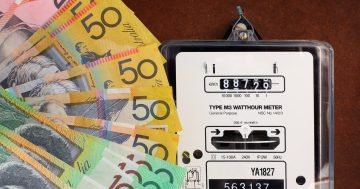If you’re worried about rising energy prices, there are fixed-price plans available. Patrick Wright* looks at whether they’re good value.
 Earlier this month, I received an email from my electricity retailer.
Earlier this month, I received an email from my electricity retailer.
My bill was about to rise dramatically, thanks to a 76 per cent hike on usage and a 26 per cent hike on the daily supply charge.
After a frantic search for a better deal, I found one retailer in Victoria offering similar rates to what I was already paying.
Even better, the rates were locked in until August 2023.
With energy prices on the rise, you also might be wondering whether it’s worth switching to an energy plan with fixed rates.
We asked Energy Consumers Australia chief executive Lynne Gallagher about the advantages and disadvantages of fixed-price energy plans.
‘Like fixing the interest rate on a home loan’
Fixed-price plans give you certainty about your energy bills, but there is a risk that you can end up paying more.
“Fixing your energy rate is a bit like fixing the interest rate on a home loan,” Ms Gallagher says.
“There is not one answer to this because everyone’s circumstances will be different.
“Q1 2022 data from the Australian Energy Regulator reports that all regions have experienced increases in wholesale electricity prices and that increasing prices are expected to persist in the regions of Queensland and New South Wales over 2022–2024.
“We are yet to see how the events of the past month, such as the market suspension and administered price cap, will have further impacted wholesale electricity prices in Q2.”
The key advantage is certainty.
In my case, I now know that my energy rates won’t move up until next August.
But you can end up paying more over the life of the contract by opting for a plan with a fixed rate.
“You’ll need to consider a number of factors … [including] the likelihood of energy prices changing in the future or if there are exit fees for changing plans before the contract is up,” Ms Gallagher explains.
The rules around price increases
The rules around energy price increases depend on where you live.
In Victoria, for example, retailers are generally only able to increase prices once a year, usually on August 1.
In other parts of Australia, retailers are allowed to change prices more frequently.
For example, you could sign up for a 12-month energy offer, and have your prices increased before the 12-month period has finished.
Your retailer must provide notice when they change their prices.
In most states and territories, the minimum notice period is five business days.
If you’re on a fixed-price contract, keep in mind your retailer can’t increase the rates until your contract expires.
Why it’s important to check the reference price
When my retailer contacted me about their price changes, I was told the new rates would be 26 per cent more expensive than the “reference price” — the basic price for energy that all retailers must offer their customers.
If you get a similar notice from your retailer, it’s a good prompt to shop around.
At the very least, you can ask your current retailer to put you onto a plan at the reference price.
“You can always choose the reference price (in Victoria this may be called the Victorian Default Offer) which is set by the Australian Energy Regulator or Essential Service Commission,” Ms Gallagher explains.
“This is available from every retailer.”
That said, there are usually offers available below the reference price, which is why it’s worth shopping around.
How to check if you’re getting a good deal on energy
- People living in NSW, Queensland, South Australia, Tasmania or the ACT can use the Federal Government’s Energy Made Easy website, which covers every plan in the market.
- If you live in Victoria, there is separate service run by the state government, Victorian Energy Compare.
- The state government is currently offering a one-off $250 payment to households who use the service.
- Western Australia and the Northern Territory are not part of the National Energy Market, which means customers aren’t able to switch to better offers.
When comparing offers, Ms Gallagher says it’s important to look out for:
- Usage rates: the price you pay for energy.
- The supply charge: this how much you are charged per day for energy to be supplied to your household.
- The tariff: a single rate tariff means you will be charged the same amount for electricity at any time of the day; a time-of-use tariff means you will be charged different amounts for your energy depending on the time of day.
Those details will be available via the government comparison services or the retailer’s website.
You can also check your bill to see what you’re already paying.
Finally, it’s important to check if you’ll face any fees for switching from your current plan.
*Patrick Wright is a reporter for ABC Life.
This article first appeared at abc.net.au.










